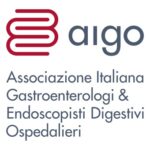
Do not use single use endoscopes regularly as they should be reserved for highly selected patients, on a case-by-case basis (immunocompromised patients or those with multidrug-resistant bacteria).
In most studies the calculated minimum estimated endoscope-associated infection risk is low when reprocessing protocols are correctly applied. The carbon footprint of single-use endoscopes is substantial as recent studies estimates that releases of CO2 and consumes of energy are higher than with reusable one or with duodenoscope with disposable end caps. It has been proposed that immunocompromised patients or those with multidrug-resistant bacteria are likely to benefit from single-use endoscopes.
Sources
1. Hernandez LV, Le NNT, Patnode C et al. Comparing the impact of reusable and single-use duodenoscopes using life cycle assessment. Gastrointest Endosc 2021; 93: AB29.
2. Sahakian AB, Siddiqui UD. Single-use duodenoscopes: The next disruptor or passing fad? Gastrointest Endosc 2021; 94: 1056–1058.
3. Holzwanger EA, Bilal M, Saperia J et al. Duodenoscope-related infections and potential role of single-use duodenoscopes. VideoGIE 2020; 5: 628–629.
Download
PDFAttention. Please note that these items are provided only for information and are not intended as a substitute for consultation with a clinician. Patients with any specific questions about the items on this list or their individual situation should consult their clinician.


Recent Comments